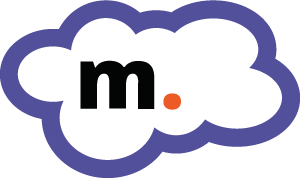My name is Jon Metz.
I like to think of myself as an “Inclusive Designer,” but this typically ends up being a buzzword for something that involves usability, UX, accessibility, project management, graphic design, organizational policy, or some combination of the above. Whatever my title is, I shy away from the term “Expert,” because there’s always someone else who is entirely better at something than I am.
Some background
Several years ago, almost all government documents I came across up to that point were insanely boring documents with uniform margins, ‘Times New Roman’ type with words that just went on and on. Painfully dreadful designs (if you can call them that), with no soul and certainly no readership. These bad rockets sat on the shelf for years awaiting clearance for final approval. This was a problem for the company I worked on, who were in the process of developing critical thought-pieces that used time-sensitive clinical data to push new ideas the government would eventually upload to their web site.
I was convinced the reason documents sat on the shelf awaiting clearance was because no one wanted to read something so utterly boring. Fortunately my employer agreed with this assessment, and I embarked on a journey of creating some really awesome designed PDF publications that changed the way the agency presented information. At that job I ended up creating hundreds of heavily designed publications that seemed to move through clearance way faster than anything else.
After many publications were approved by our Government Project Officer (GPO), they all eventually returned with a note: “These are great, but apparently they need to be something called Section 508 compliant.”
“What’s ‘Section 508 compliance’?” I asked.
“We don’t know,” the GPO replied.
Since I was the designer, my company figured I’d also need to figure out what that was and how to make my PDFs work within the law. At the time, most of the resources I could find were about a really obscure law that seemed to only deal with web sites, desktop computers, and fax machines. Since I mostly handled PDFs, this was a concept totally lost on me. One of biggest pieces of advice that I came up with is to not make documents heavily designed. If I followed that advice, I’d be out of a job!
One thing led to another, and I began reading the ISO specifications for PDFs (a scant 700+ page document!) in order to better understand what needed to be done for PDFs. Over time, I began working my way into the policy side of things, and eventually joined the US Committee for ISO 14289 (PDF/UA). Since my background is in design, I have a knack for explaining accessibility to other Creative types. So I also joined the WAI Education and Outreach Working Group at the W3C. I have a passionate interest in educating people about accessibility and the rules that help others to experience things.
Fast forward to the present, and I now focus on a bit more than just document accessibility. Currently I specialize in helping Creative vendors understand how to integrate accessibility policy into their project workflows. On this site, I talk about a whole slew of things related to accessibility, usability, design, PDFs, and policy.
If you want to read a more abridged version of me you can follow me on Twitter, or just connect with me on LinkedIn!
